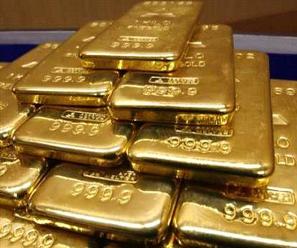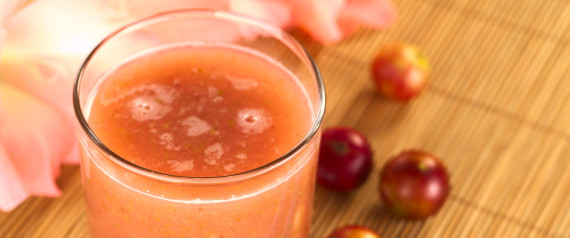|
|
|
|
 | | The economy is expected to have expanded by 5.1% in 2013, according to BCR estimates. |
Peru's gross domestic product will likely expand 6% in the first quarter of 2014 over the same period last year, according to the Andean country's Central Reserve Bank (BCR).
|
 Total credit of depository institutions to the private sector in Peru is expected to grow 14 percent this year, the Central Reserve Bank (BCR) of Peru has reported.
|
 Peru's international reserves amounted to US$ 65.66 billion at December 31, 2013, the Central Reserve Bank (BCR) said on Saturday.
This amount of reserves is US$ 1.67 billion higher than the amount of reserves recorded at end-2012.
|

Peruvian copper production increased two percent in November 2013 compared with the same month a year earlier, data from the country's Ministry of Energy and Mines (MEM) showed on Thursday.
|

Peruvian horticultural giant Camposol has decided to take on four new nations in its avocado sourcing operations, which currently include a partnership with Chile-based Agricom to supply the fruit to Europe.
|

More than US$ 1 million was invested in promoting Peru's avocados in the United States last year, according to Peruvian Avocado Commission president Carlos Enrique Camet.
|

Peru's government remains optimistic as it awaits a ruling from The Hague-based International Court of Justice over the maritime boundary dispute with Chile, according to Peruvian Foreign Minister Eda Rivas.
|

The governments of Peru and Colombia have formally agreed to share embassy offices in Vietnam and Ghana, as part of ongoing efforts to promote integration in the Pacific Alliance bloc, which also includes Chile and Mexico.
|

Top Chinese legislator Zhang Dejiang on Monday held talks with President of Peru's National Congress Fredy Otarola Penaranda, pledging stronger ties.
Zhang, chairman of the Standing Committee of the National People's Congress (NPC), reviewed the friendship between the Chinese and the Peruvians.
Peru, one of the first Latin American countries to forge diplomatic ties with the People's Republic of China, is also the first Latin American nation to sign a free trade agreement with China, Zhang said.
|
 In the midst of winter, it's easy for North Americans to feel vitamin-deprived and start searching for a supplement to bring back the sunshine. And that's where camu camu comes in. The Peruvian "superfruit" is reported to have 60 times the vitamin C of an orange, and helps our bodies' immune systems in a variety of other beneficial ways.
|

Just in time to help beat the almost insufferable Lima summer heat, Chilcano Week has arrived.
RPP Noticias reports that pisco promoters feel that the simple drink is the best way to show off Peru's hallmark liquor. No one's really sure how the Chilcano originated, but there are some well-circulated theories. RPP writes that booze historians (best job ever?) have dated the cocktail to at least 1916. Some theories suggest that the drink evolved from a cocktail made of ginger ale and grappa that was brought to Peru by Italian immigrants.
|
 |
 |
 The voices - as ever with the showier birds - are nothing special: a wheezy belching that drifts up through the pre-dawn murk like a chorus of asthmatic frogs. But the singers are something else.
At first we can see only colour: disembodied fireballs, bobbing in the forest gloom like lanterns in the ocean depths. Then, as first light filters through, we can make out shape. A dozen or so dove-sized birds, decked out in fluorescent scarlet, are hopping from branch to branch as though to some choreographed routine. Binoculars reveal mad white eyes and bizarre feathered face-fans.
|
 Peru's northern city of Trujillo is ready to welcome more than 36,500 tourists during its upcoming 54th National Marinera Competition and 4th International Marinera Competition, the biggest dance festival of the year.
|
 Workers labored for 12 hours to remove boulder had fallen into road up to Machu Picchuarchaeological site. According to El Comercio, the boulder was removed with the help of 85 workers. As the boulder was so close to the historical sanctuary of Machu Picchu, it could not be removed with dynamite or heavy machinery. Therefore, workers had to use hammers and other small hand tools. El Comercio also reports that they used expanding cement material in order to help push the rock out of the road.
|
 Paleontologists in Peru have uncovered the fossils of a "walking whale," remains believed to be at least 40 million years old. The whale fossils were found in the Ocucaje desert, one of the richest sources of fossils in the world, and may be evidence of a link between sea mammals and their ancestors living on land.
|
 The conquering days of the Inca empire may be over, but their Qhapaq Ñan road network is still spreading across the Americas. Well, in a way, at least: the Smithsonian's National Museum of the American Indian is planning a 2015 exhibition about the Incas' amazing road system.
|
 The red-necked phalarope clocked up a remarkable 16,000 miles in a round-trip from Shetland to Peru, the longest recorded for a European breeding bird and one of the world's great migrations.
Malcolm Smith of the RSPB said: 'To think this bird, which is smaller than a starling, can undertake such an arduous journey and return safely to Shetland is truly extraordinary.'
The red-necked phalarope is one of Britain's rarest birds, with as few as 15 nesting sites in the Shetlands and the Western Isles. It has been thought that after breeding in Scotland, they set off eastwards to winter in the Arabia sea.
|
 A recycling initiative has given citizens of Peru the chance to exchange litter for something useful -- 3D printed parts, services and items to make their lives a little easier. Piles of plastic, whether it be bottles, bags or packaging, are a common sight in poorer areas of the world. In parts of Peru, naturally beautiful beaches are now ruined by this problem, caused by the cheap production and non bio-degradable properties of the material. As there is no official service to clean up the mess, Canadian entrepreneur David Katz has come up with an interesting solution: make plastic a "currency" that people can spend.
|
|
|
|
|
Although Ten Top News Peru may include links providing direct access to other Internet resources, including Web sites, the Embassy of Peru in the USA is not responsible for the accuracy or content of information contained in these sites. Links from Ten Top News Peru to third-party sites do not constitute an endorsement by the Embassy of Peru of the parties or their products and services. The Embassy of Peru in the United States does not endorse either the content or information contained in the selected stories. Furthermore, the stories have been selected based on their circulation in the Web, as trending tropics.
Copyright © Embassy of Peru in the USA. All Rights Reserved.
|
|
|